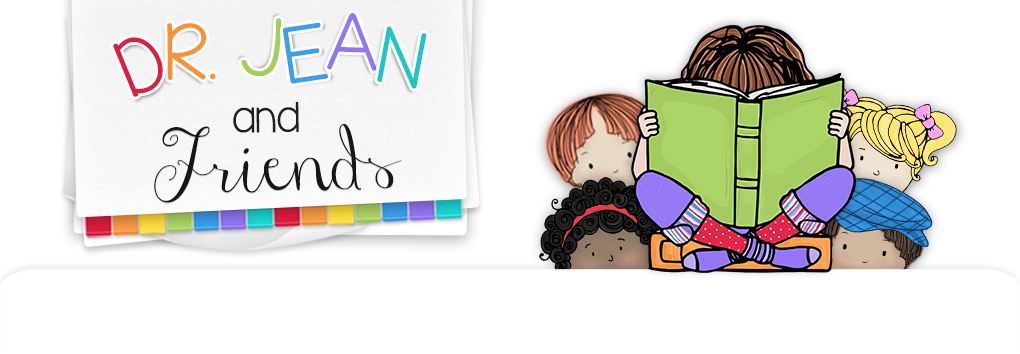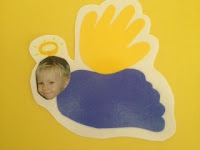Note! My granddaughter goes to a school where they are not allowed to celebrate holidays or have any outside food. My daughter and I were devastated when we heard that because we have so many special memories from holiday parties and sweet treats. It makes me sad that Kalina can't sing some of my songs and do holiday activities. But the truth is Kalina doesn't know what she's missing and so it doesn't bother her at all. She absolutely loves school. Her teacher and school have bent over backwards to do other special things with the children, such as a sock hop on Halloween. You can only control what you can control, so you just have to be a little creative to give children alternative memories.
S A N T A (Tune: "BINGO")
There is a jolly bearded manAnd Santa is his name-o.
S – A – N – T – A,
S – A – N – T – A,
S – A – N – T – A,
And Santa is his name-o.
He lives at the North Pole…
His wears a suit all red and white…
He makes toys for girls and boys…
He drives a sleigh with 8 reindeer…
He’ll visit you on Christmas Eve…

*You can download this book on my website.
S–A-N-T-A
Write a different letter on five sheets of paper. Draw a hand on the back of each sheet. Choose five children to hold these as you sing the song. Explain that as you sing the song, when you turn over the letter and see the hand they should clap.


Your kids are going to love this “Santa Hunt” that Sara Lensing adapted from “The Cool Bear Hunt.”
Santa Hunt
Get out your backpacks.
Open ‘em up.
Let’s put in some cookies for Santa and his reindeer.
And, let’s put in a thermos of milk in case he gets thirsty.
Oh. and don’t forget your Christmas lights in case it gets dark.
Zip ‘em up and repeat after me.
(Children repeat each line.)
We’re gonna find Santa (March and slap thighs.)
Before Christmas day.
He has a big, round belly (Extend arms.)
And a long, white beard. (Pull down from chin.)
Look over there! (Point.)
It’s a Candy Cane Forest!
Can’t go over it. (Arms over head.)
Can’t go under. (Arms down low.)
Can’t go around it. (Circle arms.)
I guess we’ll go through it. (Open palms and shrug shoulders.)
Slurp, slurp, slurp! (Pretend to suck on candy cane.)
We’re gonna find Santa
Before Christmas day.
He has a big, round belly
And a long, white beard.
Look over there!
It’s an egg nog river.
Can’t go over it.
Can’t go under.
Can’t go around it.
I guess we’ll swim across it. (Stroke arms as if swimming.)
We’re gonna find Santa
Before Christmas day.
He has a big, round belly
And a long, white beard.
Look over there!
It’s a gingerbread house!
Can’t go over it.
Can’t go under.
Can’t go around it.
I guess we’ll go through it.
Yum, yum, yum! (Pretend to eat gingerbread.)
We’re gonna find Santa
Before Christmas day.
He has a big, round belly
And a long, white beard.
Look over there!
It’s Santa’s workshop.
Can’t go over it.
Can’t go under.
Can’t go around it.
I guess we’ll go through it.
Shhh! (Finger over lips.)
Get out your Christmas lights. (Pretend to get out lights.)
Turn them on – click.
Let’s set out the cookies and milk.
I see a big, round belly.
And a long, white beard!
It’s Santa!
He-he-he! We can’t let him see us!
Tip toe! (Tiptoe.)
Quick! Go through the gingerbread house! Yum, yum, yum,!
Swim across the egg nog river!
Go through the Candy Cane Forest! Slurp, slurp, slurp!
Go home.
Open the door.
Shut the door.
Phew!
We found Santa.
Merry Christmas to all!

*Children could do a time line or a story map of the hunt for Santa as a follow up activity.
Santa Hunt
Get out your backpacks.
Open ‘em up.
Let’s put in some cookies for Santa and his reindeer.
And, let’s put in a thermos of milk in case he gets thirsty.
Oh. and don’t forget your Christmas lights in case it gets dark.
Zip ‘em up and repeat after me.
(Children repeat each line.)
We’re gonna find Santa (March and slap thighs.)
Before Christmas day.
He has a big, round belly (Extend arms.)
And a long, white beard. (Pull down from chin.)
Look over there! (Point.)
It’s a Candy Cane Forest!
Can’t go over it. (Arms over head.)
Can’t go under. (Arms down low.)
Can’t go around it. (Circle arms.)
I guess we’ll go through it. (Open palms and shrug shoulders.)
Slurp, slurp, slurp! (Pretend to suck on candy cane.)
We’re gonna find Santa
Before Christmas day.
He has a big, round belly
And a long, white beard.
Look over there!
It’s an egg nog river.
Can’t go over it.
Can’t go under.
Can’t go around it.
I guess we’ll swim across it. (Stroke arms as if swimming.)
We’re gonna find Santa
Before Christmas day.
He has a big, round belly
And a long, white beard.
Look over there!
It’s a gingerbread house!
Can’t go over it.
Can’t go under.
Can’t go around it.
I guess we’ll go through it.
Yum, yum, yum! (Pretend to eat gingerbread.)
We’re gonna find Santa
Before Christmas day.
He has a big, round belly
And a long, white beard.
Look over there!
It’s Santa’s workshop.
Can’t go over it.
Can’t go under.
Can’t go around it.
I guess we’ll go through it.
Shhh! (Finger over lips.)
Get out your Christmas lights. (Pretend to get out lights.)
Turn them on – click.
Let’s set out the cookies and milk.
I see a big, round belly.
And a long, white beard!
It’s Santa!
He-he-he! We can’t let him see us!
Tip toe! (Tiptoe.)
Quick! Go through the gingerbread house! Yum, yum, yum,!
Swim across the egg nog river!
Go through the Candy Cane Forest! Slurp, slurp, slurp!
Go home.
Open the door.
Shut the door.
Phew!
We found Santa.
Merry Christmas to all!

*Children could do a time line or a story map of the hunt for Santa as a follow up activity.
















































